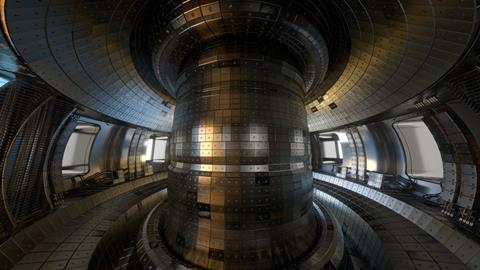Construction of set to start next year
A £300m nuclear fusion power plant backed by Amazon founder Jeff Bezos is due to start construction in Oxfordshire next year.
The demonstration plant will be built by Canada-based nuclear fusion firm General Fusion in Culham, which is home to the UK’s national fusion research programme.
The prototype facility will be 70% the size of a commercial reactor and will not generate power.

It is expected to be operational by 2025.
Unlike traditional nuclear power stations, which generate heat by splitting atoms, fusion works by combining them using the same process by which the sun creates energy.
It would be a carbon-free energy source which produces minimal radioactive waste, but is a major technological challenge because of the temperatures required to make it work.
General Fusion’s approach called magnetised target fusion, would see super-heated hydrogen injected into a cylinder surrounded by a wall of liquid metal.
The gas would then be compressed by hundreds of pneumatic pistons until its atoms fuse, releasing huge amounts of heat which would be used to boil water and drive a turbine.
Christofer Mowry, General Fusion chief executive, said the confirmation of the new plant was “incredibly exciting news for not only General Fusion, but also the global effort to develop practical fusion energy.”
It has been funded by an undisclosed sum by the UK government described by Mowry as “very meaningful”.
Amanda Solloway, UK science minister, said the plant is a “huge boost for our plans to develop a fusion industry in the UK, and I’m thrilled that Culham will be home to such a cutting-edge and potentially transformative project.
“Fusion energy has great potential as a source of limitless, low-carbon energy, and today’s announcement is a clear vote of confidence in the region and the UK’s status as a global science superpower.”
It follows news that French energy giant EDF will start the process of decommissioning the Dungeness B nuclear power station in Kent seven years ahead of schedule after risks were found with key components.



























No comments yet